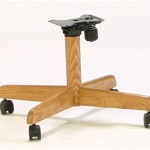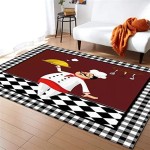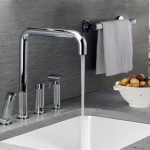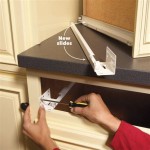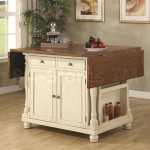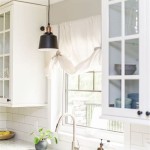What's the Best Cleaner for Kitchen Cabinets?
Kitchen cabinets are a focal point in any kitchen, and keeping them clean is essential for maintaining a hygienic and aesthetically pleasing space. With constant use, these cabinets can accumulate dirt, grease, grime, and fingerprints, making them appear dull and unappealing. Selecting the right cleaning solution can significantly impact the longevity and appearance of your kitchen cabinets while ensuring they remain sanitized. This article will explore the most effective cleaners for kitchen cabinets, considering different materials, cleaning methods, and factors to consider when choosing the best option for your needs.
Understanding Cabinet Materials
The first step in choosing the right cleaner is recognizing the material your kitchen cabinets are made from. Different materials require specific cleaning methods and products to prevent damage or discoloration.
Common cabinet materials include:
- Wood: Wood cabinets are popular for their warmth and natural beauty. However, they can be susceptible to water damage and require gentle cleaning agents.
- Laminate: Laminate cabinets are durable, affordable, and easy to clean. They are generally resistant to moisture and scratches.
- Painted Cabinets: Painted cabinets offer versatility and can be customized with various colors and finishes. They require cleaning agents that are gentle and non-abrasive.
- Thermofoil: Thermofoil cabinets are similar to laminate but have a vinyl coating that provides a smooth, glossy finish. They are moisture-resistant and easy to wipe clean.
Recommended Cleaning Solutions for Different Cabinet Materials
Once you identify your cabinet material, you can choose a cleaning solution tailored to its specific needs:
Wood Cabinets
For wood cabinets, use a mild soap solution or a specialized wood cleaner. Avoid harsh chemicals, abrasive cleaners, and excessive water, as they can damage the wood's finish. A soft cloth or sponge is recommended for cleaning.
- Mild Soap Solution: Mix a few drops of mild dish soap with warm water. Use a soft cloth to apply the solution, wiping gently in the direction of the wood grain. Rinse thoroughly with a damp cloth and dry immediately to prevent water stains.
- Wood Cleaner: Specialized wood cleaners are formulated to clean and condition wood surfaces. Follow the manufacturer's instructions for dilution and application. Apply the cleaner with a soft cloth, wiping in the direction of the wood grain. Allow the cleaner to dry completely before applying a wood polish (optional) for added protection.
Laminate and Thermofoil Cabinets
Laminate and thermofoil cabinets are more durable and can withstand harsher cleaning agents.
- All-Purpose Cleaner: An all-purpose cleaner is a versatile option for cleaning laminate and thermofoil cabinets. Choose a cleaner that is non-abrasive and safe for these surfaces. Spray the cleaner onto a soft cloth or sponge and wipe the cabinets clean. Rinse with a damp cloth and dry thoroughly to avoid water spots.
- Baking Soda Paste: For stubborn stains, a baking soda paste can be effective. Mix baking soda with a small amount of water to create a thick paste. Apply the paste to the stain and let it sit for a few minutes before scrubbing gently with a soft brush. Rinse with water and dry the surface.
Painted Cabinets
Painted cabinets require gentle cleaning to prevent scratching or removing the paint.
- Mild Soap Solution: A mild soap solution is generally safe for painted cabinets. Use a soft cloth to apply the solution, wiping gently in circular motions to avoid streaks. Rinse with a damp cloth and dry thoroughly.
- Dish Soap and Water: A solution of warm water and a few drops of dish soap can also be effective for cleaning painted cabinets. Use a soft cloth to apply the solution and wipe clean.
Beyond Cleaning: Additional Tips for Maintaining Kitchen Cabinets
Beyond regular cleaning, incorporating these additional tips can help preserve the beauty and functionality of your kitchen cabinets:
- Avoid Harsh Chemicals: Harsh chemicals, such as bleach and ammonia, can damage the finish of your cabinets. Opt for gentle cleaning solutions that are safe for your cabinet material.
- Avoid Abrasive Cleaners: Abrasive cleaners, like steel wool and scouring pads, can scratch the surface of your cabinets. Use soft cloths or sponges for cleaning.
- Regularly Clean: Regular cleaning is crucial to prevent dirt and grime buildup. Wipe down your cabinets weekly or as needed to maintain their cleanliness.
- Protect from Moisture: Excess moisture can damage wood cabinets. Wipe up spills immediately and avoid letting water stand on the surface for extended periods.
- Consider a Protective Coating: Applying a protective coating, like a sealant or varnish, can help shield wood cabinets from water damage and scratches.
Selecting the right cleaner for your kitchen cabinets is essential for maintaining their appearance and sanitation. By understanding the materials your cabinets are made from and following the recommended cleaning practices, you can effectively remove dirt, grease, and grime while preserving their beauty and functionality. Remember to apply these cleaning methods according to the manufacturer's instructions and always test any new cleaner on a hidden area of your cabinet before applying it to the entire surface.

How To Clean White Kitchen Cabinets 3 Best Ways Avoid Abbotts At Home

How To Clean White Kitchen Cabinets 3 Best Ways Avoid Abbotts At Home

We Tried 5 Methods To Clean Greasy Wood Cabinets And The Winner Is Ridiculously Effective Kitchn Cleaning Kitchen

How To Clean Kitchen Cabinets 9 Basics Bob Vila

How To Clean Kitchen Cabinets Everyday Skate

3 Super Easy Ways To Clean White Kitchen Cabinets And Avoid

How To Clean White Kitchen Cabinets 3 Best Ways Avoid Abbotts At Home

How To Clean Kitchen Cabinets Best Wood Cabinet Cleaners Cabinetdoors Com

What Is The Best Cleaning Solution For Granite Countertops

How To Clean Cabinets With Bis S
Related Posts

